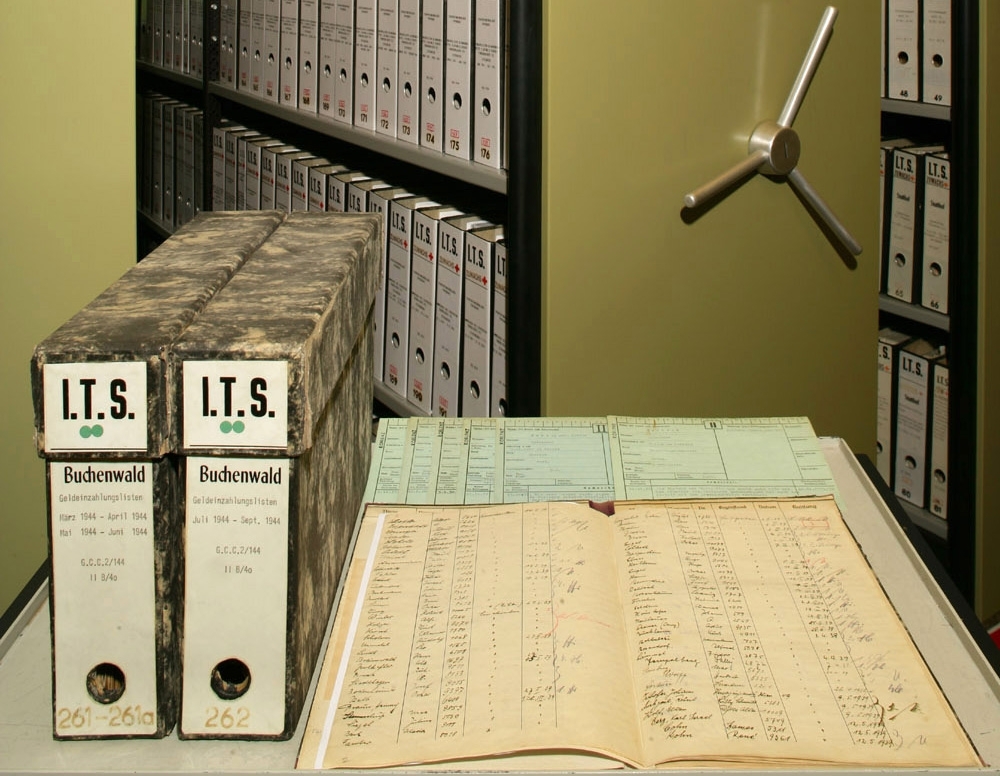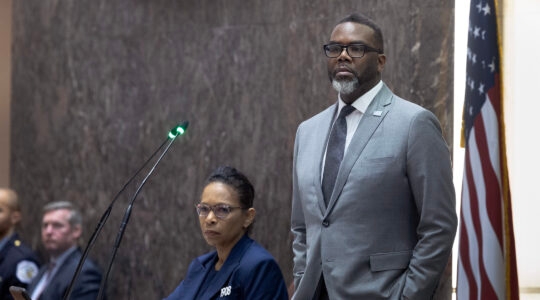WASHINGTON (JTA) — Holocaust survivors are venting their anger at the
United States Holocaust Memorial Museum over its decision not to allow
immediate electronic access to the long-secret records of the
International Tracing Service at Bad Arolsen, Germany. Many
survivors and members of the second generation have complained in the
past about the museum’s fundraising and other issues, but a dispute
over prohibiting immediate remote access to the Bad Arolsen
documentation — the way other government documents are accessed —
brought many in the Holocaust community to express their anger publicly
as never before. The documents are expected to be transferred
to the Holocaust museum here under an international treaty. The
archives include millions of images relating to concentration-camp
prisoner documents.”Where does the museum get the chutzpah?”
asked David Schaecter, president of the Miami-based Holocaust Survivors
Foundation. He singled out Paul Shapiro, director of the museum’s
Center for Advanced Holocaust Studies and the point man for the Bad
Arolsen transfer. “I don’t know how in the name of God Shapiro
can look at himself in the mirror,” especially after his March 28
testimony before a U.S. House of Representatives subcommittee,
Schaecter said. Schaecter sat next to Shapiro as they testified to the
House about the need to bring the Bad Arolsen documents to America.Shapiro
did not respond to calls seeking comment. Arthur Berger, a senior
adviser to the museum on external affairs, defended him.”Paul
Shapiro has probably done more than any individual in the world to get
this archive opened,” Berger said. “He has literally worked day and
night to fulfill our moral responsibility to help survivors get
information and not allow them to pass away without finding out more
information about themselves and their families.”Berger said
the museum was waiting for the material to be released before it could
provide specifics of how it would make the material available. But he
said the museum was committed to making the archive widely accessible. “The
museum has been leading the effort for years to open the archives at
Bad Arolsen, and we’ve really been working aggressively to help
survivors nationwide gain access to the archives,” he said. “We have
done whatever is possible and we will continue to have the highest
commitment to ensure that when we have the material, we will do
everything in our power to get access to that information to survivors.
Whatever it takes.”But that hasn’t mollified survivors and their advocates.”After
recent dealings with the museum, it is more and more evident that they
are not committed to the survivors in whose name this museum was
built,” said Klara Firestone, founding president of Second Generation
Los Angeles and a member of the coordinating council of the Generations
of the Shoah International.In the era of instant access to
documents offered by Google, Yahoo, ProQuest and LexisNexis, Holocaust
survivors and advocates say they don’t understand why the documents
can’t be made available to local libraries or home computers the way
government documents ordinarily are accessed.On May 9, a
representative of several survivor groups sent a note to congressional
staffers who work on committees that are considering the museum’s quest
for sole control of the archive. Several congressional committees are
involved with oversight of treaties and museum funding.”The
consensus — from survivors as well as community leaders — is that
something is definitely amiss here,” said Samuel Dubbin, attorney for
the Holocaust Survivors Foundation, a national coalition of elected
survivor leaders. “The museum seems to be constructing an access
protocol based on a continuing sensitivity to European privacy concerns
and probably in a way that masks individual company involvement in
slave labor system. By no means… will this be made
Internet-accessible.”Firestone agreed, telling JTA, “After 60
years of concealing and hiding, when they open this archive, if it does
not give immediate — I mean immediate — and instant remote access to
everyone, it will be just another blow” to the Holocaust community. The
existing search mechanism in the Bad Arolsen archives works as fast as
Google, but museum sources said they wanted to create a proprietary
search engine that will be accessible only from on-site computers. Anti-Defamation League National Director Abraham
Foxman, who served on
the U.S. Holocaust Memorial Council under three presidents, added, “I
would hope that the Bad Arolsen archives could be as easily accessible
as modern science makes possible. Those archives are for the survivors’
needs and use first, and scholars later.”Some survivors assert
that the archive transfer is just a pretext for the museum to engage in
aggressive fundraising. Schaecter bristled as he recalled a recent
experience. “I come back from Washington after I testified
before the House about these archives,” he recalled to JTA, “I’m not
home for 6 hours, I get a call from the Boca office of the museum from
their fundraiser, and he says, ‘I heard about your testimony and I
heard about you caring’ — and all this nonsense! ‘Since you are deeply
involved,’ he says, ‘maybe you should make a meaningful donation.’ ” It “would be such an unbelievable blow if the museum gets these records,” he said. Berger, however, said the museum was the natural choice to house the archive.”As
America’s national memorial for victims of the Holocaust and one of the
two largest repositories of Holocaust-related documentation in the
world” — the other is the Yad Vashem Holocaust memorial in Jerusalem,
which also will receive the Bad Arolsen documents — “the museum is the
appropriate site in the United States for this collection,” he said. Menachem
Rosensaft, founding chairman of International Network of Children of
Jewish Holocaust Survivors, who served for a decade on the United
States Holocaust Memorial Council, asserted, “I have great respect for
Paul Shapiro. I am also convinced that without the museum and U.S.
government, we would not have the archive. But the museum is not immune
to criticism or difference of opinion. I am a firm believer that all
documentation and archives should be as widely accessible as is humanly
and technologically possible. So long as there are no longer legal
impediments, I see absolutely no reason why the documents should not be
made accessible on the Internet.”The first 10 million images of
concentration-camp documents will soon transfer to the museum under
embargo, pending full ratification of the treaty releasing the
documents. The 11-nation commission that controls the International
Tracing Service initialed a May 16, 2006, treaty authorizing release,
but each of the 11 nations must ratify the treaty under its existing
laws. The last four countries — France, Greece, Italy and
Luxembourg — are expected to ratify the release late this year or early
next year. Once ratified, national delegates must sign the single,
controlling copy of the treaty; only then will the treaty be approved
and implemented.A museum spokesman reiterated the institution’s
stance that the files will not be made accessible via the Internet. At
first the museum claimed that the treaty prohibited Internet access.
The museum then reversed itself, saying the treaty was silent on the
Internet issue. Despite repeated requests, the museum refused to provide a copy of the 11-nation treaty, claiming it was secret. Congressional
sources and State Department sources scoffed at that characterization.
A copy of the treaty obtained by JTA confirms that it does not prohibit
an American institution from placing the digitized files on the
Internet or a national database that can be easily accessed.Meanwhile,
survivors are organizing protest letters to send to congressmen and
other officials in what one survivor called a “race against time to
stop Shapiro” from engineering a restrictive transfer of the documents
at the International Tracing Service’s annual meeting in Amsterdam on
May 14-15. Edwin Black is the New York Times bestselling
author of the award-winning “IBM and the Holocaust” and is responsible
for a series of investigations revealing the contents of the ITS
archives at Bad Arolsen.
JTA has documented Jewish history in real-time for over a century. Keep our journalism strong by joining us in supporting independent, award-winning reporting.






